
Associate · Business & Technology · Technology

TECH201 FOUNDATIONS OF TECHNOLOGY PROBLEM SOLVING I
- SUMMER - 15 WEEK 2017
- Section All
- 05/01/2017 to 08/13/2017
- Modified 07/14/2016
Description
This course provides an introduction to the basic concepts of calculus and their applications in engineering technology. Students will use limits, derivatives, and integrals to solve problems related to different engineering technology disciplines.
This is a 4-credit course, requiring a minimum of 24 hours of course engagement each week in an 8-week term, or 12 hours per week in a 15-week term (refer to the Credit Hours Calculation Policy in the Student Handbook). Course engagement includes such activities as discussions, reading, study time, and assignments.
MAT 116 – Precalculus Algebra, or equivalent MAT 118 – College Trigonometry, or equivalent
In order to comprehend the course materials, the student needs to have mastery of College Algebra, Trigonometry, and Pre-Calculus concepts and techniques.
Upon completion of the course, students will have the knowledge and skills to be able to:
- State the definition of the limit of a function and evaluate limit problems.
- State the definition of a continuous function and identify intervals where a function is continuous.
- State the definition of the derivative of a function and find derivatives using the definition.
- Appropriately apply rules of differentiation to find the derivative various functions.
- Calculate the derivative of an implicitly defined function.
- Solve various technical problems using related rates.
- Employ optimization techniques of calculus to solve applied technical problems.
- Evaluate the indefinite integral for various functions.
- Use a definite integral to find the area of a region bounded by curves.
- Use definite integrals to solve technical applications including velocity, net change, volume, and surface area.
Course Outcome Matrix
|
| 1 | 2 | 3 | 4 | 5 | 6 | 7 | 8 | 9 | 10 |
| Mod 1 DB | x | x |
|
|
|
|
|
|
|
|
| Mod 1 HW | x | x |
|
|
|
|
|
|
|
|
| Mod 1 Quiz | x | x |
|
|
|
|
|
|
|
|
| Mod 2 DB |
|
| x | x |
|
|
|
|
|
|
| Mod 2 HW |
|
| x | x |
|
|
|
|
|
|
| Mod 2 Quiz |
|
| x | x |
|
|
|
|
|
|
| Mod 3 DB |
|
|
| x | x | x |
|
|
|
|
| Mod 3 HW |
|
|
| x | x | x |
|
|
|
|
| Mod 3 Quiz |
|
|
| x | x | x |
|
|
|
|
| Mod 4 DB | x | x | x | x | x | x | x | x |
|
|
| Mod 4 HW |
|
|
| x |
|
| x | x |
|
|
| Mod 4 Midterm Exam | x | x | x | x | x | x | x | x |
|
|
| Mod 5 DB |
|
|
|
|
|
|
| x | x |
|
| Mod 5 HW |
|
|
|
|
|
|
| x | x | x |
| Mod 5 Quiz |
|
|
|
|
|
|
| x | x | x |
| Mod 6 DB |
|
|
|
|
|
|
|
| x | x |
| Mod 6 HW |
|
|
|
|
|
|
|
| x | x |
| Mod 6 Quiz |
|
|
|
|
|
|
|
| x | x |
| Mod 7 DB |
|
|
|
|
|
|
|
|
| x |
| Mod 7 HW |
|
|
| x | x |
|
| x |
| x |
| Mod 7 Quiz |
|
|
| x | x |
|
| x |
| x |
| Mod 8 DB | x | x | x | x | x | x | x | x | x | x |
| Mod 8 HW | x | x | x | x | x | x | x | x | x | x |
| Mod 8 Final Exam | x | x | x | x | x | x | x | x | x | x |
PROGRAM Outcome Matrix
|
|
| |||||||||||
|
|
|
|
|
|
|
|
|
|
|
| ||
| PO #1 | Demonstrate a fundamental knowledge of natural sciences, including physics. |
|
|
|
|
|
|
|
|
|
| |
| PO #2 | Demonstrate the ability to measure, and provide quantitative expressions of natural science phenomena, including experimentation, observation, and accurate measurement. |
|
|
|
|
|
|
|
|
|
| |
| PO #3 | Apply the fundamentals of algebra, trigonometry, and calculus to problem solving in electrical engineering technology areas. | X | X | X | X | X | X | X | X | X | X | |
| PO #4 | Make oral technical presentations in English using language appropriate to the audience. |
|
|
|
|
|
|
|
|
|
| |
| PO #5 | Demonstrate proficiency in the written communication of technical information using standard English. |
|
|
|
|
|
|
|
|
|
| |
| PO #6 | Demonstrate a working knowledge of computer usage, including knowledge of one or more computer languages or documentation of the use of one or more computer software packages for technical problem solving appropriate to the electrical engineering technology discipline. |
|
|
|
|
|
|
|
|
|
| |
| PO #7 | Demonstrate technical competency in electronics, circuit analysis, digital electronics, electronic communications, microprocessors, and systems. |
|
|
|
|
|
|
|
|
|
| |
| PO #8 | Integrate knowledge of the functional areas of electrical engineering technology. |
|
|
|
|
|
|
|
|
|
| |
| PO#9 | Demonstrate the ability to analyze, apply design concepts, and implement systems as appropriate to electrical engineering technology. |
|
|
|
|
|
|
|
|
|
| |
| PO#10 | Participate effectively in groups, and apply project management techniques as appropriate to complete assignments. |
|
|
|
|
|
|
|
|
|
| |
| PO#11 | Demonstrate an ability to understand professional, ethical, and social responsibilities, including the impacts of culture, diversity, and interpersonal relations. |
|
|
|
|
|
|
|
|
|
| |
| PO#12 | Demonstrate a commitment and ability to continue to engage in lifelong learning. |
|
|
|
|
|
|
|
|
|
| |
| PO#13 | Demonstrate a commitment to quality, timeliness, and continuous improvement. |
|
|
|
|
|
|
|
|
|
| |
| (Student Outcomes) |
| |||||||||||
|
|
|
|
|
|
|
|
|
|
|
| ||
| PO #1 | Select and apply appropriate knowledge, techniques, skills, and modern tools of the natural sciences, including physics, chemistry, thermodynamics, atomic physics, and nuclear physics, to solving problems in nuclear engineering technology areas. |
|
|
|
|
|
|
|
|
|
| |
| PO #2 | Demonstrate the ability to understand, measure, and provide quantitative expressions for natural phenomena, including observation, standard tests, experimentation, and accurate measurement. |
|
|
|
|
|
|
|
|
|
| |
| PO #3 | Select and apply appropriate knowledge, techniques, skills, and modern tools of algebra, trigonometry, and calculus to problem solving in nuclear engineering technology areas. | X | X | X | X | X | X | X | X | X | X | |
| PO #4 | Make oral technical presentations in Standard English using graphics and language appropriate to the audience. |
|
|
|
|
|
|
|
|
|
| |
| PO #5 | Demonstrate proficiency in the written and graphical communication of technical information supported by appropriate technical references using Standard English. |
|
|
|
|
|
|
|
|
|
| |
| PO #6 | Demonstrate a working knowledge of computer applications or documentation of the use of one or more computer software packages for technical problem solving appropriate to the nuclear engineering technology discipline. |
|
|
|
|
|
|
|
|
|
| |
| PO #7 | Demonstrate technical competency in the electrical theory, nuclear and engineering materials, reactor core fundamentals, power plant systems, heat transfer, fluids, health physics/radiation protection, and radiation measurement. |
|
|
|
|
|
|
|
|
|
| |
| PO #8 | Demonstrate comprehension of currently applicable rules and regulations in the areas of radiation protection, operations, maintenance, quality control, quality assurance, and safety. |
|
|
|
|
|
|
|
|
|
| |
| PO#9 | Integrate and apply knowledge of the functional areas of nuclear engineering technology in the safe operation and maintenance of nuclear systems. |
|
|
|
|
|
|
|
|
|
| |
| PO#10 | Design systems, components, or processes while demonstrating a commitment to quality, timeliness, and continuous improvement of the design and operation of nuclear systems. |
|
|
|
|
|
|
|
|
|
| |
| PO#11 | Participate effectively as a member or a leader of technical teams. |
|
|
|
|
|
|
|
|
|
| |
| PO#12 | Demonstrate an understanding of and commitment to professional, ethical and social responsibilities, including the effects of culture, diversity, and interpersonal relations. |
|
|
|
|
|
|
|
|
|
| |
| PO#13 | Demonstrate a commitment and ability to engage in self-directed continuing professional development. |
|
|
|
|
|
|
|
|
|
| |
| (Student Outcomes) |
| |||||||||
|
|
|
|
|
|
|
|
|
|
|
|
| PO#1: Apply knowledge of computing and mathematics for problem solving in the field of IT. | X | X | X | X | X | X | X | X | X | X |
| PO#2: Demonstrate the ability to identify and analyze user needs to define and create appropriate computing requirements and solutions. |
|
|
|
|
|
|
|
|
|
|
| PO#3: Demonstrate the ability to effectively select, evaluate, and integrate Information Technologies based solutions in a user environment. |
|
|
|
|
|
|
|
|
|
|
| PO#4: Demonstrate the ability to participate effectively in group or team projects. |
|
|
|
|
|
|
|
|
|
|
| PO#5: Demonstrate an ability to understand professional, ethical and social responsibilities, including the impacts of culture, diversity, and interpersonal relations. |
|
|
|
|
|
|
|
|
|
|
| PO#6: Demonstrate proficiency in communicating technical information in formal reports, documentation, and presentations to users and IT professionals. |
|
|
|
|
|
|
|
|
|
|
| PO#7: Demonstrate the ability to identify and analyze the impacts of information technologies and computing on public, organizations, and individuals. |
|
|
|
|
|
|
|
|
|
|
| PO#8: Demonstrate the ability to identify and apply current and emerging technologies and tools for Information Technologies solutions. |
|
|
|
|
|
|
|
|
|
|
| PO#9: Demonstrate expertise in the core information technologies including web technologies, data base management, information management and security, object oriented programming, computer architecture, systems architecture, operating systems, networking and system administration. |
|
|
|
|
|
|
|
|
|
|
| PO#10: Demonstrate the ability to analyze computing and information security requirements and risks, and apply the appropriate tools and techniques to protect organizational data assets in an ethically responsible manner. |
|
|
|
|
|
|
|
|
|
|
| PO#11: Demonstrate the ability to apply best practices and standards for IT applications. |
|
|
|
|
|
|
|
|
|
|
| PO#12: Demonstrate the ability to assist in the creation of an effective project plan. |
|
|
|
|
|
|
|
|
|
|
| PO#13: Demonstrate a commitment to professional development and to continue to engage in lifelong learning. |
|
|
|
|
|
|
|
|
|
|
Deliverables
Click here to view the 8 week Term Schedules.
Click here to view the 15 week Term Schedules.
Course Schedule
Weeks start on Monday,12:01 AM ET and end on Sunday, 11:59 PM ET, US.
Unless otherwise noted, all assigned items are due at the end of the module (by 11:59PM, Sunday).
|
|
|
|
|
|
|
| 1 | Module 1: Limits and Continuity | 2.1–2.6 | M1A1: Homework 1 | M1D1 : Limits and Continuity | 1, 2 |
| 2 | M1A2: Quiz | ||||
| 3 | Module 2: Derivatives | 3.1–3.7 | M2A1: Homework 2 | M2D1: Derivatives | 3, 4 |
| 4 | M2A2: Quiz | ||||
| 5 | Module 3: Applications of Derivatives | 3.8–3.11, 4.1–4.2 | M3A1: Homework 3 | M3D1: Related Rates | 4, 5, 6 |
| 6 | M3A2: Quiz | ||||
| 7 | Module 4: Midterm Exam & More Applications of Derivatives | 4.4–4.5, 4.9 | M4A1: Midterm Exam | M4D1: Preparing for the Midterm Exam | 1–8 |
| 8 | M4A2: Homework 4 | ||||
| 9 | Module 5: Integration | 5.1–5.5 | M5A1: Homework 5 | M5D1: Approximating Area Under a Curve | 8-10 |
| 10 | M5A2: Quiz | ||||
| 11 | Module 6: Applications of Integration | 6.1-6.5 | M6A1: Homework 6 | M6D1: Velocity and Net Change | 9, 10 |
| 12 | M6A2: Quiz | ||||
| 13 | Module 7: More Applications of Integration | 6.6–6.10 | M7A1: Homework 7 | M7D1: Physical Applications of Integrals | 4, 8, 10 |
| 14 | M7A2: Quiz | ||||
| 15 | Module 8: Review & Final Exam | Review All Sections | M8A1: Homework 8 M8A2: Final Exam | M8D1: Preparing for the Final Exam | 1–10 |
| Grade Ranges A=90-100% B=80-89% C=70-79% D=60-69% F=below 60% |
| Activity/Assessment | % of final grade |
| Graded Homework Assignments | 20% |
| Quizzes | 30% |
| Midterm Exam | 15% |
| Final Exam | 20% |
| Participation in Weekly Online Discussions | 15% |
| Total | 100% |
Before beginning your course work, be sure to review the Excelsior College Guidelines for Online Interaction (a.k.a. Online Etiquette or "Netiquette"). If you have any questions regarding these guidelines, please feel free to direct them to your instructor.
All papers in this course are subject to anti-plagiarism software.
Ungraded, Required, Homework Assignments – 0% For Modules 1, 2, 3, 4, 5, 6, and 7, students will be required to complete problems from sections of the textbook at the MML/CourseCompass site. Students must achieve at least 70% on a section before gaining access to the next section. Students have an unlimited number of attempts at each of these problems, along with help resource buttons accompanying each problem. Students must complete these ungraded assignments before gaining access to the Graded Homework Assignment (for all but Module 8, which has no ungraded homework assignments).
Graded Homework Assignments – 20% Students will have two attempts at each problem on the graded homework assignments taken at the MML/CourseCompass site. For Modules 1, 2, 3, 5, 6, and 7 students must complete the ungraded assignments before gaining access to the Graded Homework Assignment. For Modules 4 and 8 there are no prerequisites for accessing the Graded Homework Assignment.
Quizzes – 30% For Modules 1, 2, 3, 5, 6, and 7, students will be required to complete quizzes at the MML/CourseCompass site. The student must complete the Graded Homework Assignment before gaining access to the quiz. Each of the 6 quizzes will consist of questions similar to the homework (graded and ungraded) assignments.
Midterm Exam – 15% Students will be required to take the mid-term exam during Module 4 of the course term. The exam will be open to students for one week at the MML/CourseCompass site and is to be taken before all other MML/CourseCompass assignments for Module 4. Thus, students should allow time to complete the new material and associated assignments after the midterm but before the end of the module. The midterm will consist of questions similar to those the student has already seen in graded and ungraded homework assignments. Final Exam – 20% TECH 201 students will be required to take the comprehensive final exam during Module 8 of the course term. The exam will be open to students for one week at the MML/CourseCompass site and is to be taken after completing the Graded Homework Assignment in MML/CourseCompass for Module 8. The final will consist of questions similar to those the student has already seen in graded and ungraded homework assignments.
If you navigate away from a quiz or exam while taking the assessment, you may be locked out. Your instructor has sole discretion, and only under exceptional circumstances, to reset an incomplete examination. To request a reset, you must contact your instructor.
Participation in Weekly Online Discussions – 15% A series of discussion questions will be posted during the course. The School of Business and Technology discussion rubric will be used to assess your discussion contributions.
By registering for a web-based course, you have made a commitment to participate regularly with your instructor and other students in online discussions. You will be expected to use online course tools ( Discussions and Chat rooms) to interact with your peers and work collaboratively to improve your understanding of underlying course ideas and issues. Students should be familiar with the discussion grading rubric before posting to the discussion.
To have mathematical discussions, students will need to utilize an equation editor. This can be done with the “insert equation” feature found in the discussion or using the “insert equation” feature found in Word. To lessen the risk of losing your work, it is recommended you do not write major discussions directly into a discussion post. Instead, compose and check your work in Word and then attach your Word document to your discussion post. Note, equation formatting will be lost by cutting and pasting from Word into the discussion board, so please do not do so.
Course Policies
Late Assignment Policy: You are expected to meet deadlines for all quizzes, examinations, assignments, and discussions. Late assignments will be subject to a deduction of 5% of the available points for every calendar week that the assignment is overdue. Situations involving extenuating circumstances will be considered at the discretion of the instructor.
If for any reason you are having difficulty keeping up with your coursework, be sure to check policies on Course Withdrawals and Course Extensions.
Save ALL your work: If you are enrolled in one of the following Excelsior College degree programs, please save your coursework, laboratory assignments, term papers/projects and assignments as supporting documentation for the Integrated Technology Assessment (ITA) in your final course.
- Bachelor of Science in Electronics Engineering Technology
- Bachelor of Science in Information Technology
- Bachelor of Science in Nuclear Engineering Technology
Institutional Policies
COURSE PARTICIPATION:
Weekly course participation is required. Please see the Student Participation Policy for more details.
Instructor Participation
Your instructor will:
- Post a welcome message during the first 24 hours of the course.
- Schedule real time office hours through the chat room and/or by individual appointment.
- Communicate with you through the Blackboard communication tools, including internal course messaging.
- Respond to student communications within two business days.
- Log into the course to review and participate at least three different days a week in 15-week courses, or four different days a week in 8-week courses.
- Provide you with formative feedback midway through the course based on work submitted to that point.
- Grade all formative assignments within 7 business days in 15-week courses and 4 business days in 8-week courses, and will grade final summative work within 5 business days after the end of the term.
You are responsible for being familiar with all the policies that are related to your activity in this course. Complete information on Excelsior College policies can be found in the Course Information area or by visiting www.excelsior.edu/policies .
All student work in this course may be submitted to plagiarism detection software. The reports from this software may be used as evidence in support of disciplinary actions. Please see the policy on Academic Honesty for more details.
Pardon Our Interruption
As you were browsing something about your browser made us think you were a bot. There are a few reasons this might happen:
- You've disabled JavaScript in your web browser.
- You're a power user moving through this website with super-human speed.
- You've disabled cookies in your web browser.
- A third-party browser plugin, such as Ghostery or NoScript, is preventing JavaScript from running. Additional information is available in this support article .
To regain access, please make sure that cookies and JavaScript are enabled before reloading the page.
FREE K-12 standards-aligned STEM
curriculum for educators everywhere!
Find more at TeachEngineering.org .
- TeachEngineering
- Problem Solving
Lesson Problem Solving
Grade Level: 8 (6-8)
(two 40-minute class periods)
Lesson Dependency: The Energy Problem
Subject Areas: Physical Science, Science and Technology

- Print lesson and its associated curriculum
Curriculum in this Unit Units serve as guides to a particular content or subject area. Nested under units are lessons (in purple) and hands-on activities (in blue). Note that not all lessons and activities will exist under a unit, and instead may exist as "standalone" curriculum.
- Energy Forms and States Demonstrations
- Energy Conversions
- Watt Meters to Measure Energy Consumption
- Household Energy Audit
- Light vs. Heat Bulbs
- Efficiency of an Electromechanical System
- Efficiency of a Water Heating System
- Solving Energy Problems
- Energy Projects
| Unit | Lesson | Activity |
TE Newsletter
Engineering connection, learning objectives, worksheets and attachments, more curriculum like this, introduction/motivation, associated activities, user comments & tips.

Scientists, engineers and ordinary people use problem solving each day to work out solutions to various problems. Using a systematic and iterative procedure to solve a problem is efficient and provides a logical flow of knowledge and progress.
- Students demonstrate an understanding of the Technological Method of Problem Solving.
- Students are able to apply the Technological Method of Problem Solving to a real-life problem.
Educational Standards Each TeachEngineering lesson or activity is correlated to one or more K-12 science, technology, engineering or math (STEM) educational standards. All 100,000+ K-12 STEM standards covered in TeachEngineering are collected, maintained and packaged by the Achievement Standards Network (ASN) , a project of D2L (www.achievementstandards.org). In the ASN, standards are hierarchically structured: first by source; e.g. , by state; within source by type; e.g. , science or mathematics; within type by subtype, then by grade, etc .
Ngss: next generation science standards - science.
View aligned curriculum
Do you agree with this alignment? Thanks for your feedback!
International Technology and Engineering Educators Association - Technology
State standards, national science education standards - science.
Scientists, engineers, and ordinary people use problem solving each day to work out solutions to various problems. Using a systematic and iterative procedure to solve a problem is efficient and provides a logical flow of knowledge and progress.
In this unit, we use what is called "The Technological Method of Problem Solving." This is a seven-step procedure that is highly iterative—you may go back and forth among the listed steps, and may not always follow them in order. Remember that in most engineering projects, more than one good answer exists. The goal is to get to the best solution for a given problem. Following the lesson conduct the associated activities Egg Drop and Solving Energy Problems for students to employ problem solving methods and techniques.
Lesson Background and Concepts for Teachers
The overall concept that is important in this lesson is: Using a standard method or procedure to solve problems makes the process easier and more effective.
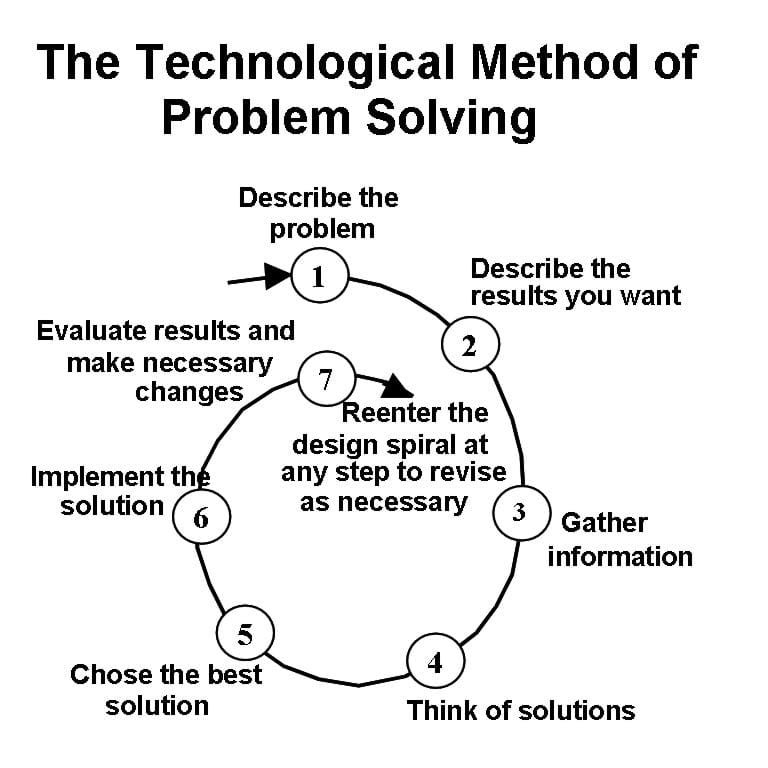
The specific process of problem solving used in this unit was adapted from an eighth-grade technology textbook written for New York State standard technology curriculum. The process is shown in Figure 1, with details included below. The spiral shape shows that this is an iterative, not linear, process. The process can skip ahead (for example, build a model early in the process to test a proof of concept) and go backwards (learn more about the problem or potential solutions if early ideas do not work well).
This process provides a reference that can be reiterated throughout the unit as students learn new material or ideas that are relevant to the completion of their unit projects.
Brainstorming about what we know about a problem or project and what we need to find out to move forward in a project is often a good starting point when faced with a new problem. This type of questioning provides a basis and relevance that is useful in other energy science and technology units. In this unit, the general problem that is addressed is the fact that Americans use a lot of energy, with the consequences that we have a dwindling supply of fossil fuels, and we are emitting a lot of carbon dioxide and other air pollutants. The specific project that students are assigned to address is an aspect of this problem that requires them to identify an action they can take in their own live to reduce their overall energy (or fossil fuel) consumption.
The Seven Steps of Problem Solving
1. Identify the problem
Clearly state the problem. (Short, sweet and to the point. This is the "big picture" problem, not the specific project you have been assigned.)
2. Establish what you want to achieve
- Completion of a specific project that will help to solve the overall problem.
- In one sentence answer the following question: How will I know I've completed this project?
- List criteria and constraints: Criteria are things you want the solution to have. Constraints are limitations, sometimes called specifications, or restrictions that should be part of the solution. They could be the type of materials, the size or weight the solution must meet, the specific tools or machines you have available, time you have to complete the task and cost of construction or materials.
3. Gather information and research
- Research is sometimes needed both to better understand the problem itself as well as possible solutions.
- Don't reinvent the wheel – looking at other solutions can lead to better solutions.
- Use past experiences.
4. Brainstorm possible solutions
List and/or sketch (as appropriate) as many solutions as you can think of.
5. Choose the best solution
Evaluate solution by: 1) Comparing possible solution against constraints and criteria 2) Making trade-offs to identify "best."
6. Implement the solution
- Develop plans that include (as required): drawings with measurements, details of construction, construction procedure.
- Define tasks and resources necessary for implementation.
- Implement actual plan as appropriate for your particular project.
7. Test and evaluate the solution
- Compare the solution against the criteria and constraints.
- Define how you might modify the solution for different or better results.
- Egg Drop - Use this demonstration or activity to introduce and use the problem solving method. Encourages creative design.
- Solving Energy Problems - Unit project is assigned and students begin with problem solving techniques to begin to address project. Mostly they learn that they do not know enough yet to solve the problem.
- Energy Projects - Students use what they learned about energy systems to create a project related to identifying and carrying out a personal change to reduce energy consumption.
The results of the problem solving activity provide a basis for the entire semester project. Collect and review the worksheets to make sure that students are started on the right track.

Learn the basics of the analysis of forces engineers perform at the truss joints to calculate the strength of a truss bridge known as the “method of joints.” Find the tensions and compressions to solve systems of linear equations where the size depends on the number of elements and nodes in the trus...

Through role playing and problem solving, this lesson sets the stage for a friendly competition between groups to design and build a shielding device to protect humans traveling in space. The instructor asks students—how might we design radiation shielding for space travel?
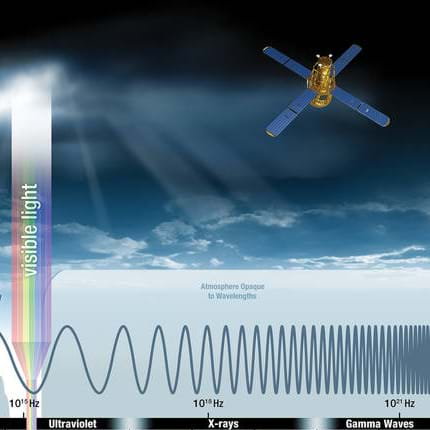
A process for technical problem solving is introduced and applied to a fun demonstration. Given the success with the demo, the iterative nature of the process can be illustrated.

The culminating energy project is introduced and the technical problem solving process is applied to get students started on the project. By the end of the class, students should have a good perspective on what they have already learned and what they still need to learn to complete the project.

Hacker, M, Barden B., Living with Technology , 2nd edition. Albany NY: Delmar Publishers, 1993.
Other Related Information
This lesson was originally published by the Clarkson University K-12 Project Based Learning Partnership Program and may be accessed at http://internal.clarkson.edu/highschool/k12/project/energysystems.html.
Contributors
Supporting program, acknowledgements.
This lesson was developed under National Science Foundation grants no. DUE 0428127 and DGE 0338216. However, these contents do not necessarily represent the policies of the National Science Foundation, and you should not assume endorsement by the federal government.
Last modified: August 16, 2023

- General Chemistry

Foundations of College Chemistry, 16th Edition
Digital evaluation copy.

Morris Hein , Susan Arena , Cary Willard
Foundations of College Chemistry , 16e presents chemistry as a modern, vital subject and is designed to make introductory chemistry accessible to all beginning students. It is intended for students who have never taken a chemistry course or those who had a significant interruption in their studies but plan to continue with the general chemistry sequence. The central focus: to make chemistry interesting and understandable and teach students the problem-solving skills they will need. The authors build on the strengths of previous editions, including clear explanations and step-by-step problem solving. The material emphasizes the real world applications of chemistry as the authors develop the principles that form the foundation for the further study of chemistry. Enhanced materials through WileyPLUS with new interactive features and additional case studies in many chapters encourage students to engage with the book in their individual learning styles.
- 13 new Case Studies, providing an opportunity for students to work in teams and to apply the concepts and information they have studied to a new situation. Assessment questions are available with the Case Studies.
- New and revised end-of-chapter questions and exercises
- Updated illustration and photo program.
Refined learning aids include:
- Learning Objectives highlight the concept being taught in each section. These objectives are tied to Example Practice Problems, Review Exercises , and Exercises to help students master each concept module and objective.
- Important terms are set off in bold type where they are defined. All Key Terms listed in the Chapter Review are also defined in the Glossary .
- Worked examples show students the “how” of problem solving using Problem-Solving Strategies and Solution Maps before they are asked to tackle problems on their own.
- Practice problems permit immediate reinforcement of a skill shown in the example problems. Answers are provided at the end of the chapter to encourage students to check their work immediately.
- Marginal notations help students understand basic concepts and problem-solving techniques. These are printed in blue to clearly distinguish them from text and vocabulary terms.
- A Review of Mathematics , covering the basic functions, is provided in Appendix I.
Development of Problem-Solving skills approach that is a step-by-step process that teaches the use of units and shows the change from one unit to the next. It encourages students to think their way through each problem, incorporating fundamental math skills, scientific notations, and significant figures.
Heavy emphasis on fostering students' skills through a positive attitude is woven throughout, so that they learn a systematic approach to solving problems is better than simple memorization. Important rules and equations are highlighted for emphasis and ready reference.
Student practice problems follow the examples in the text. The end of each chapter begins with a Chapter Review and Review Questions section, which help students review key terms and concepts, as well as material presented in tables and figures. This is followed by Paired Exercises , covering concepts and numerical exercises, where two similar exercises are presented side by side.
The less theoretical aspects of chemistry are emphasized early, leaving more abstract theory for later.
- Chapters 1 through 3 present the basic mathematics and the language of chemistry, including an explanation of the metric system and significant figures.
- Chapter 4 presents chemical properties – the ability of a substance to form new substances.
- Chapter 5 has students encounter the history and language of basic atomic theory.
- Chapter 6-9 emphasizes nomenclature, composition of compounds, and reactions before moving into the details of modern atomic theory.
- Chapter 10 and 11 discusses the Periodic Table in detail (introduced in earlier chapters).
Sensitivity to building student confidence is placed throughout to instill confidence in connecting the molecular models and the macroscopic properties of matter, especially for and with students who have no prior chemistry background.

- My presentations
Auth with social network:
Download presentation
We think you have liked this presentation. If you wish to download it, please recommend it to your friends in any social system. Share buttons are a little bit lower. Thank you!
Presentation is loading. Please wait.
Foundations of Technology Problem-Solving Activity
Published by Erkki Hukkanen Modified over 5 years ago
Similar presentations
Presentation on theme: "Foundations of Technology Problem-Solving Activity"— Presentation transcript:

THE GREAT EGG DROP LAB METC 106.

Problem Solving: Transportation Systems. The Activity: Egg Crash Vehicle.

Problem-Solving Activity Advanced Design Applications Problem-Solving Activity Teacher Resource – First Five Days: Day 1 © 2014 International Technology.

Team Problem Solving Activity

Key Learning ◦ Energy can be transferred through a mechanism to perform a given task. Unit Essential Question ◦ How can energy be transferred from.

Happy Egg Sad Egg. In this lesson you will use teamwork to design a container that will protect a raw egg as it falls to the ground from a height of 12.

Problem-Solving Activity Foundations of Technology Problem-Solving Activity © 2013 International Technology and Engineering Educators Association STEM.

Invention & Innovation

Foundations of Technology The Engineering Design Process

Foundations of Technology Sketching and Technical Drawing

Foundations of Technology Energy and Power

Foundations of Technology Construction

What to do… Get a lab report from me Take out a pencil

~MEETING TECHNOLOGY~ Unit 1

Foundations of Technology Calculating Area and Volume

Foundations of Technology Technological Inventions and Innovations

Foundations of Technology Creativity and Brainstorming

Foundations of Technology Information and Communication
About project
© 2024 SlidePlayer.com Inc. All rights reserved.
IEEE Account
- Change Username/Password
- Update Address
Purchase Details
- Payment Options
- Order History
- View Purchased Documents
Profile Information
- Communications Preferences
- Profession and Education
- Technical Interests
- US & Canada: +1 800 678 4333
- Worldwide: +1 732 981 0060
- Contact & Support
- About IEEE Xplore
- Accessibility
- Terms of Use
- Nondiscrimination Policy
- Privacy & Opting Out of Cookies
A not-for-profit organization, IEEE is the world's largest technical professional organization dedicated to advancing technology for the benefit of humanity. © Copyright 2024 IEEE - All rights reserved. Use of this web site signifies your agreement to the terms and conditions.

Or search by topic
Number and algebra.
- Place value and the number system
- Fractions, decimals, percentages, ratio and proportion
- Calculations and numerical methods
- Algebraic expressions, equations and formulae
- Coordinates, functions and graphs
- Patterns, sequences and structure
- Properties of numbers
Geometry and measure
- 3D geometry, shape and space
- Transformations and constructions
- Vectors and matrices
- Measuring and calculating with units
- Pythagoras and trigonometry
- Angles, polygons, and geometrical proof
Probability and statistics
- Handling, processing and representing data
- Probability (spec_group)
Working mathematically
- Thinking mathematically
- Mathematical mindsets
Advanced mathematics
- Decision mathematics and combinatorics
- Advanced probability and statistics
For younger learners
- Early years foundation stage
Problem Solving
Problem solving and the new curriculum
Developing a classroom culture that supports a problem-solving approach to mathematics
Developing excellence in problem solving with young learners
Using NRICH Tasks to Develop Key Problem-solving Skills
Trial and Improvement at KS1
Trial and Improvement at KS2
Working Systematically - Primary teachers
Number Patterns
Working Backwards at KS1

Working Backwards at KS2
Visualising at KS1 - Primary teachers
Visualising at KS2 - Primary teachers
Conjecturing and Generalising at KS1 - Primary teachers
Conjecturing and Generalising at KS2 - Primary teachers
We've Updated Our Terms of Use and Privacy Policy
To review, please visit g-w.com/terms and g-w.com/privacy
G-W Publisher does not sell or rent any personal information.
- Careers with G-W
- Engage with Us
- Accessibility

Foundations of Engineering & Technology, 8th Edition
Foundations of Engineering & Technology is a comprehensive, contemporary high school text that focuses on the relationships between technology and multiple engineering disciplines. While covering the impacts of technology, technological systems, the history of technology, the applications of technology, and the designed world, the text also emphasizes engineering and design aspects by focusing on the engineering design process and problem-solving skills. Numerous student-friendly features provide practical examples of the impacts of technology and engineering on our world. STEM Applications, Engineering Design Challenges, and Technology Student Association (TSA) activities help students apply chapter content to real-world situations. The text covers a wide range of topics in various industries while still providing a detailed introduction to the core concepts of engineering and technology, allowing students to build a strong foundation and spark curiosity in a variety of different fields. This book is fully correlated to the ITEEA’s Standards for Technological and Engineering Literacy and to YouScience’s Engineering Technology exam standards. Each chapter includes an Essential Question that aligns to the Framework for P–12 Engineering Learning, designed by Advancing Excellence in P–12 Engineering Education (AE3) and the American Society for Engineering Education (ASEE) research collaborative, encouraging students to think critically about how the chapter concepts relate to a student's life.
- STEM Connections and Academic Connections relate chapter content to math, science, history, and communications.
- Career Connections present information about careers related to various technological fields.
- Think Green highlights key items related to sustainability, energy efficiency, and environmental issues.
| Products | Pages | ISBN | Retail Price | Order Quantity |
|---|---|---|---|---|
| 719 | 979-8-88817-399-2 | $146.64 | ||
| Hardcover Text. is a comprehensive, contemporary high school text that focuses on the relationships between technology and multiple engineering disciplines. While covering the impacts of technology, technological systems, the history of technology, the applications of technology, and the designed world, the text also emphasizes engineering and design aspects by focusing on the engineering design process and problem-solving skills. Numerous student-friendly features provide practical examples of the impacts of technology and engineering on our world. STEM Applications, Engineering Design Challenges, and Technology Student Association (TSA) activities help students apply chapter content to real-world situations. The text covers a wide range of topics in various industries while still providing a detailed introduction to the core concepts of engineering and technology, allowing students to build a strong foundation and spark curiosity in a variety of different fields. This book is fully correlated to the ITEEA’s and to YouScience’s Engineering Technology exam standards. Each chapter includes an Essential Question that aligns to the Framework for P–12 Engineering Learning, designed by Advancing Excellence in P–12 Engineering Education (AE3) and the American Society for Engineering Education (ASEE) research collaborative, encouraging students to think critically about how the chapter concepts relate to a student's life. | ||||
| 979-8-89118-157-1 | $34.64 | |||
| Organized to follow the textbook on a chapter-by-chapter basis, providing questions to help the student review the material presented in the chapter. This supplement is a consumable resource, designed with perforated pages so that a given chapter can be removed and turned in for grading or checking. | ||||
| *Qualified schools may be eligible for a 25% discount. | ||||
| Products | ISBN | Retail Price | Order Quantity | |
|---|---|---|---|---|
| 979-8-89118-126-7 | $168.64 | |||
| The Online Learning Suite offers a complete learning package that is accessible through any Internet-enabled device, including computers, smartphones, and tablets. Students can study in the classroom or on the go: whenever or wherever it is most convenient. | ||||
| 979-8-89118-127-4 | $219.96 | |||
| Bundle includes a copy of the Student Textbook and Online Learning Suite 6yr. Classroom Subscription. Minimum quantity of 15 must be purchased. | ||||
| 979-8-89118-125-0 | $73.32 | Call to Order‡ | ||
| *Qualified schools may be eligible for a 25% discount. | ||||
| ‡To order this item, please call . | ||||
| Products | ISBN | Retail Price | Order Quantity | |
|---|---|---|---|---|
| 979-8-88817-872-0 | Call to Order‡ | |||
| 979-8-88817-872-0 | $800.00 | Call to Order‡ | ||
| *Qualified schools may be eligible for a 25% discount. | ||||
| ‡To order this item, please call . | ||||

Dr. Greg J. Strimel - is an Associate Professor of Technology Leadership and Innovation at Purdue University in West Lafayette, Indiana. In this role, he educates pre-service teachers on the processes of developing engineering and technology curriculum and maintaining learning facilities/laboratories. Additionally, he is the program lead for the Design & Innovation program, where he supports students in their pursuits of innovation through cross-disciplinary is an Associate Professor of Technology Leadership and Innovation at Purdue University in West Lafayette, Indiana. In this role, he educates pre-service teachers on the processes of developing engineering and technology curriculum and maintaining learning facilities/laboratories. Addi-tionally, he is the program lead for the Design & Innovation program, where he supports students in their pursuits of innovation through cross-disciplinary collaborations. Dr. Strimel’s educational degrees include a bachelor of science and a master of education in technology education from California University of Pennsylvania, and a doctorate of philosophy in occupational and technical studies, with an emphasis on engineering and technology education from Old Dominion University. His prior teaching experiences include serving as a high school engineering and technology teacher in Maryland, teaching assistant professor of engineering at West Virginia University, and adjunct instructor for engineering and technology teacher education at the University of Maryland Eastern Shore and California University of Pennsylvania. Dr. Strimel has also served as a high school career and technology education department chair, the director of K–12 initiatives for West Virginia University, and a professional development leader for multiple engineering and technology curriculum providers. His work has been recognized through the International Technology and Engineering Educators Association’s Distinguished Technology and Engineering Educator Designation; and Purdue University’s highest honor for undergraduate teaching.
Dr. Michael E. Grubbs - is the Coordinator of Career and Technology Education for Baltimore County Public Schools. Dr. Grubbs' educational background includes a bachelor's of science and a master's of education in technology education from California University of Pennsylvania, an educational specialist's in workforce education from the University of Georgia, as well as a doctorate of philosophy in curriculum and instruction with an emphasis on Integrative STEM Education from Virginia Tech. Dr. Grubbs has served as a middle school technology and engineering education teacher for Clayton County Public Schools, lead middle school teacher for Clayton County Public Schools, graduate research assistant for Virginia Tech, and Adjunct Instructor for New River Community College. His work has been recognized through the Donald Maley Spirit of Excellence: Outstanding Graduate Student Citation, CTETE International Travel Award, Virginia Tech's Outstanding Student in Integrative STEM Education Award, International Technology & Engineering Educators Association's (ITEEA) Emerging Leader Designation, and the Council on Technology & Engineering Teacher Education's 21st Century Leader Fellowship. Additionally, Dr. Grubbs has served the profession in multiple roles. These positions include Secretary of the Council on Technology and Engineering Teacher Education (CTETE), Marketing Committee Chair, and CTETE Webmaster. He has written numerous articles on Technology and Engineering Education, and presented regionally, nationally, and internationally.
Dr. R. Thomas Wright - is one of the leading figures in technology-education curriculum development in the United States. Dr. Wright has served the profession through many professional offices. These offices include President of the International Technology and Engineering Educators Association (ITEEA) and President of the Council on Technology Teacher Education (CTTE). His work has been recognized through the ITEEA Academy of Fellows award and Award of Distinction, the CTTE Technology Teacher Educator of the Year, the Epsilon Pi Tau Laureate Citation and Distinguished Service Citation, the Sagamore of the Wabash Award from the Governor of Indiana, the Bellringer Award from the Indiana Superintendent of Public Instruction, the Ball State University Faculty of the Year Award and George and Frances Ball Distinguished Professorship, and the EEA-Ship Citation. Dr. Wright's educational background includes a bachelor's degree from Stout State University, a master of science degree from Ball State University, and a doctoral degree from the University of Maryland. His teaching experience consists of 3 years as a junior high instructor in California and 37 years as a university instructor at Ball State University. In addition, he has also been a visiting professor at Colorado State University; Oregon State University; and Edith Cowan University in Perth, Australia.

Suggestions or feedback?
MIT News | Massachusetts Institute of Technology
- Machine learning
- Sustainability
- Black holes
- Classes and programs
Departments
- Aeronautics and Astronautics
- Brain and Cognitive Sciences
- Architecture
- Political Science
- Mechanical Engineering
Centers, Labs, & Programs
- Abdul Latif Jameel Poverty Action Lab (J-PAL)
- Picower Institute for Learning and Memory
- Lincoln Laboratory
- School of Architecture + Planning
- School of Engineering
- School of Humanities, Arts, and Social Sciences
- Sloan School of Management
- School of Science
- MIT Schwarzman College of Computing
A framework for solving parabolic partial differential equations
Press contact :.
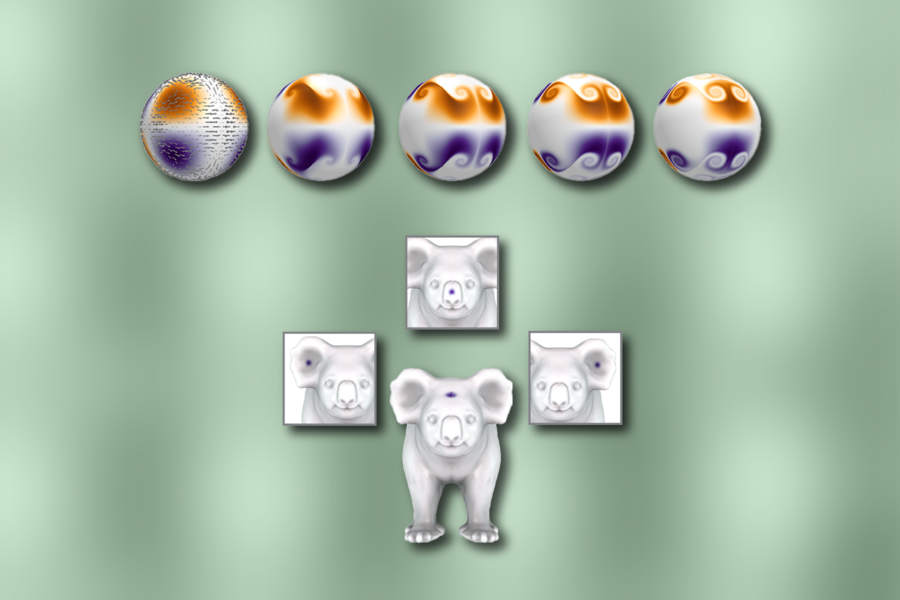
Previous image Next image
Computer graphics and geometry processing research provide the tools needed to simulate physical phenomena like fire and flames, aiding the creation of visual effects in video games and movies as well as the fabrication of complex geometric shapes using tools like 3D printing.
Under the hood, mathematical problems called partial differential equations (PDEs) model these natural processes. Among the many PDEs used in physics and computer graphics, a class called second-order parabolic PDEs explain how phenomena can become smooth over time. The most famous example in this class is the heat equation, which predicts how heat diffuses along a surface or in a volume over time.
Researchers in geometry processing have designed numerous algorithms to solve these problems on curved surfaces, but their methods often apply only to linear problems or to a single PDE. A more general approach by researchers from MIT’s Computer Science and Artificial Intelligence Laboratory (CSAIL) tackles a general class of these potentially nonlinear problems. In a paper recently published in the Transactions on Graphics journal and presented at the SIGGRAPH conference, they describe an algorithm that solves different nonlinear parabolic PDEs on triangle meshes by splitting them into three simpler equations that can be solved with techniques graphics researchers already have in their software toolkit. This framework can help better analyze shapes and model complex dynamical processes.
“We provide a recipe: If you want to numerically solve a second-order parabolic PDE, you can follow a set of three steps,” says lead author Leticia Mattos Da Silva SM ’23, an MIT PhD student in electrical engineering and computer science (EECS) and CSAIL affiliate. “For each of the steps in this approach, you’re solving a simpler problem using simpler tools from geometry processing, but at the end, you get a solution to the more challenging second-order parabolic PDE.” To accomplish this, Da Silva and her coauthors used Strang splitting, a technique that allows geometry processing researchers to break the PDE down into problems they know how to solve efficiently.
First, their algorithm advances a solution forward in time by solving the heat equation (also called the “diffusion equation”), which models how heat from a source spreads over a shape. Picture using a blow torch to warm up a metal plate — this equation describes how heat from that spot would diffuse over it. This step can be completed easily with linear algebra.
Now, imagine that the parabolic PDE has additional nonlinear behaviors that are not described by the spread of heat. This is where the second step of the algorithm comes in: it accounts for the nonlinear piece by solving a Hamilton-Jacobi (HJ) equation, a first-order nonlinear PDE. While generic HJ equations can be hard to solve, Mattos Da Silva and coauthors prove that their splitting method applied to many important PDEs yields an HJ equation that can be solved via convex optimization algorithms. Convex optimization is a standard tool for which researchers in geometry processing already have efficient and reliable software. In the final step, the algorithm advances a solution forward in time using the heat equation again to advance the more complex second-order parabolic PDE forward in time.
Among other applications, the framework could help simulate fire and flames more efficiently. “There’s a huge pipeline that creates a video with flames being simulated, but at the heart of it is a PDE solver,” says Mattos Da Silva. For these pipelines, an essential step is solving the G-equation, a nonlinear parabolic PDE that models the front propagation of the flame and can be solved using the researchers’ framework.
The team’s algorithm can also solve the diffusion equation in the logarithmic domain, where it becomes nonlinear. Senior author Justin Solomon, associate professor of EECS and leader of the CSAIL Geometric Data Processing Group, previously developed a state-of-the-art technique for optimal transport that requires taking the logarithm of the result of heat diffusion. Mattos Da Silva’s framework provided more reliable computations by doing diffusion directly in the logarithmic domain. This enabled a more stable way to, for example, find a geometric notion of average among distributions on surface meshes like a model of a koala. Even though their framework focuses on general, nonlinear problems, it can also be used to solve linear PDE. For instance, the method solves the Fokker-Planck equation, where heat diffuses in a linear way, but there are additional terms that drift in the same direction heat is spreading. In a straightforward application, the approach modeled how swirls would evolve over the surface of a triangulated sphere. The result resembles purple-and-brown latte art.
The researchers note that this project is a starting point for tackling the nonlinearity in other PDEs that appear in graphics and geometry processing head-on. For example, they focused on static surfaces but would like to apply their work to moving ones, too. Moreover, their framework solves problems involving a single parabolic PDE, but the team would also like to tackle problems involving coupled parabolic PDE. These types of problems arise in biology and chemistry, where the equation describing the evolution of each agent in a mixture, for example, is linked to the others’ equations.
Mattos Da Silva and Solomon wrote the paper with Oded Stein, assistant professor at the University of Southern California’s Viterbi School of Engineering. Their work was supported, in part, by an MIT Schwarzman College of Computing Fellowship funded by Google, a MathWorks Fellowship, the Swiss National Science Foundation, the U.S. Army Research Office, the U.S. Air Force Office of Scientific Research, the U.S. National Science Foundation, MIT-IBM Watson AI Lab, the Toyota-CSAIL Joint Research Center, Adobe Systems, and Google Research.
Share this news article on:
Related links.
- Leticia Mattos Da Silva
- Justin Solomon
- Computer Science and Artificial Intelligence Laboratory (CSAIL)
- MIT-IBM Watson AI Lab
- Department of Electrical Engineering and Computer Science
Related Topics
- Computer science and technology
- Artificial intelligence
- Computer graphics
- Electrical Engineering & Computer Science (eecs)
Related Articles
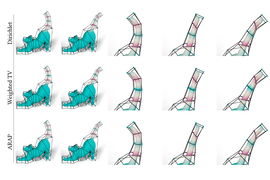
A flexible solution to help artists improve animation

A computer scientist pushes the boundaries of geometry
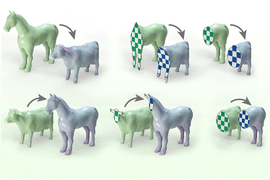
A better way to match 3D volumes
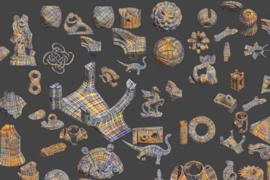
Better simulation meshes well for design software (and more)
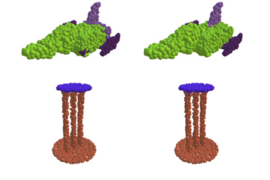
Deep learning with point clouds
Previous item Next item
More MIT News
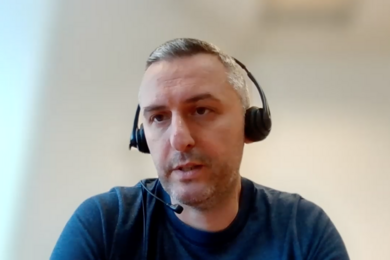
How MIT’s online resources provide a “highly motivating, even transformative experience”
Read full story →
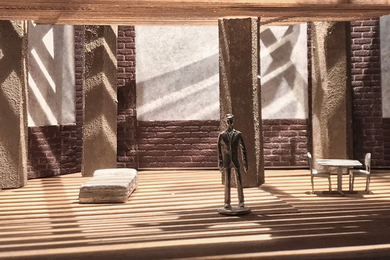
Students learn theater design through the power of play

Designing better delivery for medical therapies

Making a measurable economic impact
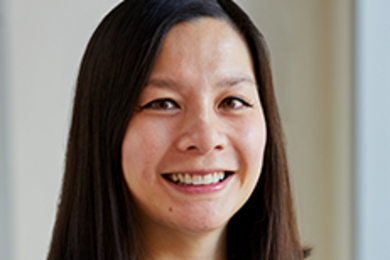
Faces of MIT: Jessica Tam
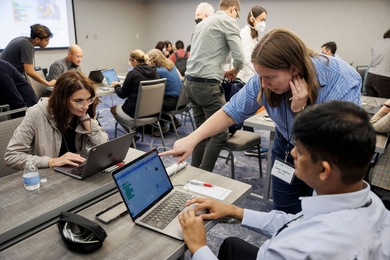
First AI + Education Summit is an international push for “AI fluency”
- More news on MIT News homepage →
Massachusetts Institute of Technology 77 Massachusetts Avenue, Cambridge, MA, USA
- Map (opens in new window)
- Events (opens in new window)
- People (opens in new window)
- Careers (opens in new window)
- Accessibility
- Social Media Hub
- MIT on Facebook
- MIT on YouTube
- MIT on Instagram

Foundations of Mathematical Modelling for Engineering Problem Solving
- © 2023
- Parikshit Narendra Mahalle 0 ,
- Nancy Ambritta P. 1 ,
- Sachin R. Sakhare 2 ,
- Atul P. Kulkarni 3
Department of Artificial intelligence and Data Science, Vishwakarma Institute of Information Technology, Pune, India
You can also search for this author in PubMed Google Scholar
Glareal Software Solutions PTE Ltd, Singapore, Singapore
Department of computer engineering, vishwakarma institute of information technology, pune, india, department of mechanical engineering, vishwakarma institute of information technology, pune, india.
- Provides illustrations and pseudocode for better understanding and applicability
- Elaborates on the problem solving and mathematical modeling processes
- Equips the readers with the ability to identify and categorize the problems at hand making it an effortless task
Part of the book series: Studies in Autonomic, Data-driven and Industrial Computing (SADIC)
1777 Accesses
2 Citations
This is a preview of subscription content, log in via an institution to check access.
Access this book
Subscribe and save.
- Get 10 units per month
- Download Article/Chapter or eBook
- 1 Unit = 1 Article or 1 Chapter
- Cancel anytime
- Available as EPUB and PDF
- Read on any device
- Instant download
- Own it forever
- Compact, lightweight edition
- Dispatched in 3 to 5 business days
- Free shipping worldwide - see info
- Durable hardcover edition
Tax calculation will be finalised at checkout
Other ways to access
Licence this eBook for your library
Institutional subscriptions
About this book
Similar content being viewed by others.

Problem Solving Methods for Mathematical Modelling

Reflections on Progress in Mathematical Modelling Research
Moving within a mathematical modelling map.
- Mathematical Modelling
- Problem Solving
- Problem Classification
Decision Problems
Optimization problems.
- Delay Models
Data Science Problems
Pandemic problems.
- Inter-Disciplinary Problems
Table of contents (9 chapters)
Front matter, introduction.
- Parikshit Narendra Mahalle, Nancy Ambritta P., Sachin R. Sakhare, Atul P. Kulkarni
Problem Solving and Mathematical Modeling
Delay problems, interdisciplinary engineering problems, authors and affiliations.
Parikshit Narendra Mahalle
Nancy Ambritta P.
Sachin R. Sakhare
Atul P. Kulkarni
About the authors
Bibliographic information.
Book Title : Foundations of Mathematical Modelling for Engineering Problem Solving
Authors : Parikshit Narendra Mahalle, Nancy Ambritta P., Sachin R. Sakhare, Atul P. Kulkarni
Series Title : Studies in Autonomic, Data-driven and Industrial Computing
DOI : https://doi.org/10.1007/978-981-19-8828-8
Publisher : Springer Singapore
eBook Packages : Intelligent Technologies and Robotics , Intelligent Technologies and Robotics (R0)
Copyright Information : The Editor(s) (if applicable) and The Author(s), under exclusive license to Springer Nature Singapore Pte Ltd. 2023
Hardcover ISBN : 978-981-19-8827-1 Published: 11 January 2023
Softcover ISBN : 978-981-19-8830-1 Published: 11 January 2024
eBook ISBN : 978-981-19-8828-8 Published: 10 January 2023
Series ISSN : 2730-6437
Series E-ISSN : 2730-6445
Edition Number : 1
Number of Pages : XI, 168
Number of Illustrations : 12 b/w illustrations, 62 illustrations in colour
Topics : Computational Intelligence , Optimization , Artificial Intelligence
- Publish with us
Policies and ethics
- Find a journal
- Track your research

IMAGES
VIDEO
COMMENTS
Students will use limits, derivatives, and integrals to solve problems related to different engineering technology disciplines. This is a 4-credit course, requiring a minimum of 24 hours of course engagement each week in an 8-week term, or 12 hours per week in a 15-week term (refer to the Credit Hours Calculation Policy in the Student Handbook).
Foundations of Technology Problem Solving I (TECH201) University; Excelsior College; Foundations of Technology Problem Solving I; Follow this course. Documents (1)Questions (0)Students (0) Essays. Date Rating. year. Ratings. IND101 Final Paper Garber #2. 6 pages 2020/2021 None. 2020/2021 None. Save. Related Answered Questions.
©2013 International Technology and Engineering Educators Association Foundations of Technology, Third Edition/ Technology, Engineering, and Design Unit 1: Technological Inventions and ... I Research and development is a specific problem-solving approach that is used intensively in business and industry to prepare devices and systems for the ...
Electrical-engineering document from Excelsior University, 5 pages, 1 M4A1 Tyler Dugan BS in Electrical Engineering Technology, Excelsior College Tech201: Foundations of Technology Problem Solving Professor Dylan Hardy May 30, 2021 2 M4A1 1 2 y=x −2 (4,14) ' y =2 x ' y =2 ( 4 ) y'=8 2 s=3t2-5t t=4 s'=6t-5 s'=6*4-5=19 3 f
Presentation on theme: "Foundations of Technology Problem-Solving Activity"— Presentation transcript: 1 Foundations of Technology Problem-Solving Activity STEM Center for Teaching & Learning™ Engineering byDesign ™ 12/01/2009 ...
Study with Quizlet and memorize flashcards containing terms like Technology, Technology literate, Systems/Problem Solving Model and more.
Troubleshoot, analyze and maintain systems to ensure safe and proper function and precision. Use computers and calculators to access, retrieve, organize, process, maintain, interpret, and evaluate data and information in order to communicate. (ITEA, STL 12-‐P).
Problem solving is a process of resolving a known difficulty. Anderson (1980) emphasizes the processes undertaken during the act of problem solving. V. William DeLuca is Assistant Professor, Department of Occupational Education, North Carolina State University, Raleigh, North Carolina. by defining this behavior as goal directed sequence of ...
1. Identify the problem. Clearly state the problem. (Short, sweet and to the point. This is the "big picture" problem, not the specific project you have been assigned.) 2. Establish what you want to achieve. Completion of a specific project that will help to solve the overall problem.
Foundations of Technology Problem Solving I (TECH201) University Excelsior College. Academic year: 2020/2021. Uploaded by: Anonymous Student. This document has been uploaded by a student, just like you, who decided to remain anonymous. ... Foundations Professor Judith Reed April 26, 2020.
FOUNDATIONS OF TECHNOLOGY I . 2013-2014 . Course Description: The course is an overview of technology, which provides hands-on application of the various ... Engineering Problem-solving . Manufacturing . Required Textbooks and/or Other Reading/Research Materials . Numerous Engineering Design Software Programs. Course Requirements:
of the designed world. Problem solving experiences will center on the use of tools, machines, and materials to design and construct models, devices, and products that creatively solve complex technological problems. Foundations of Technology has been designated as a required course for all students in
Foundations of College Chemistry , 16e presents chemistry as a modern, vital subject and is designed to make introductory chemistry accessible to all beginning students. ... The central focus: to make chemistry interesting and understandable and teach students the problem-solving skills they will need. The authors build on the strengths of ...
INTRODUCTION. Engineering design is the creative process of identifying needs and then devising a solution to fill those needs. This solution may be a product, a technique, a structure, a project, a method, or many other things depending on the problem. The general procedure for completing a good engineering design can be called the Engineering ...
Problem solving involves devising a new solution that has not previously been found or defined., Critical thinking is a type of thinking that uses mental abilities to identify, _____, and evaluate a situation or problem., What is the first step in the general problem-solving process? and more. ... Foundations of Engineering & Technology- Design ...
1 Foundations of Technology Problem-Solving Activity STEM Center for Teaching & Learning™ Engineering byDesign ™ 12/01/2009 ...
1.1.1 Conduct a self-study of personal leadership and teamwork styles. 1.1.2 Identify and utilize the strengths of individuals to solve a problem as a team. 1.2.1 Explain the importance of the principles expressed in the TSA Motto and Creed. 1.2.2 Prepare a meeting agenda for a TSA monthly/weekly meeting.
The identification of mathematical problem-solving foundations also implies acknowledging what terms, concepts, and language or discourse that the problem-solving community has used to refer to and frame problem-solving approaches. ... Focus in high school mathematics: Technology to support reasoning and sense making. National Council of ...
In this work, a formulation of alternating direction method of multipliers (ADMM) for addressing power amplifiers (PA) modeling and linearization problems is presented. The proposal consists on leveraging the implicit redundancy of the equations in order to achieve a distributed architecture. A detailed theoretical formulation of the method is provided in order to get a better comprehension of ...
Early years foundation stage. List. Problem Solving. article Problem solving and the new curriculum. ... Developing excellence in problem solving with young learners. Becoming confident and competent as a problem solver is a complex process that requires a range of skills and experience. In this article, Jennie suggests that we can support this ...
719. 979-8-88817-399-2. $146.64 *. Hardcover Text. Foundations of Engineering & Technology is a comprehensive, contemporary high school text that focuses on the relationships between technology and multiple engineering disciplines. While covering the impacts of technology, technological systems, the history of technology, the applications of ...
tended Audience: Grades 9-10 Course Length: 36 weeksFoundations of Technology and Engineering prepares students to understand and apply technological concepts and processes that are the cornerstone f. r the high school technology and engineering program. Group and individual activities engage students in creating ideas, develo.
Moreover, their framework solves problems involving a single parabolic PDE, but the team would also like to tackle problems involving coupled parabolic PDE. These types of problems arise in biology and chemistry, where the equation describing the evolution of each agent in a mixture, for example, is linked to the others' equations.
Buy print copy. Softcover Book USD 169.99. Price excludes VAT (USA) Compact, lightweight edition. Dispatched in 3 to 5 business days. Free shipping worldwide - see info. Hardcover Book. It aims at improving the mathematical modelling skills of users by enhancing the ability to understand, connect, apply and use the mathematical concepts.